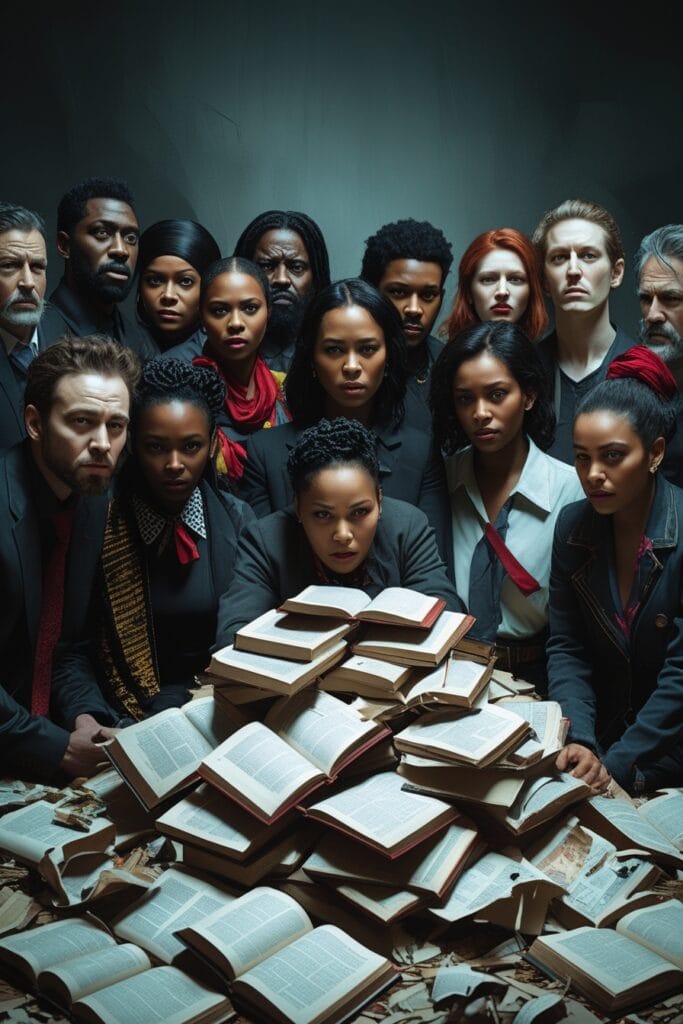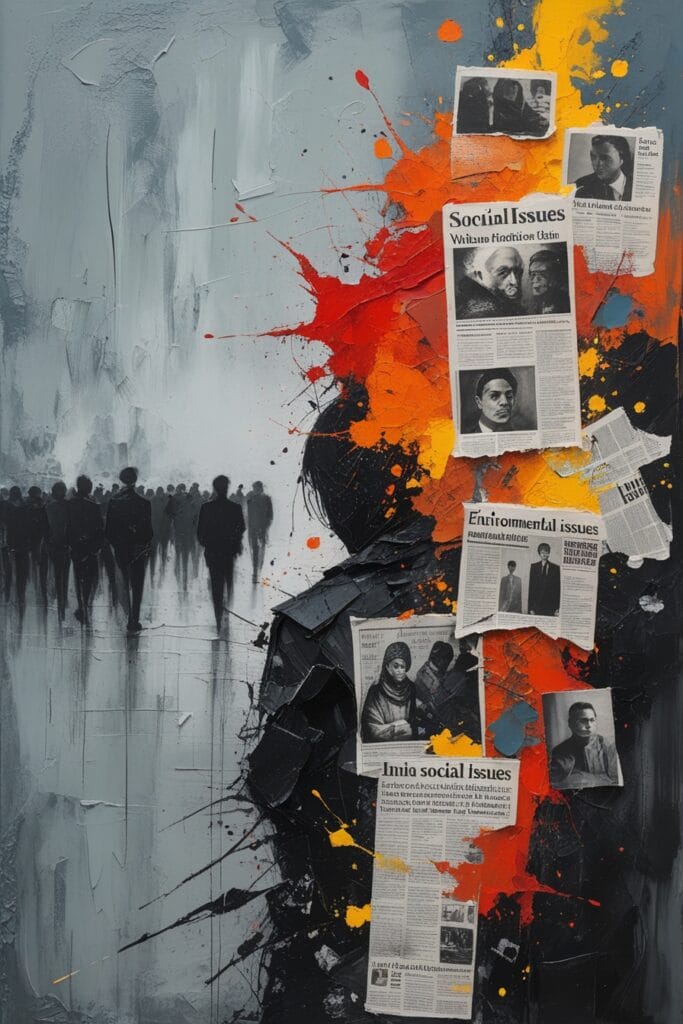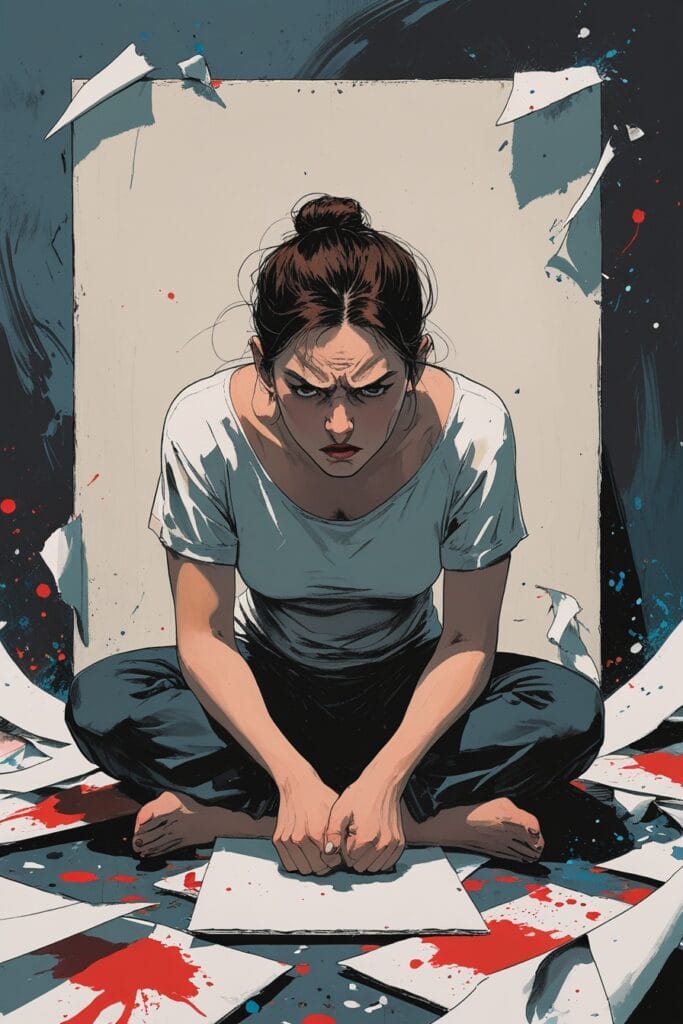Controversy & Literature
Controversy or Controversial Literature is the notion of contention in literature that indicates the public discord or dispute regarding a particular composition, author, theme, or idea. It occurs mainly because of offensive content, defiance of social norms, or presentation of contentious perspectives that evoke strong feedback from readers, critics, or a wider audience. Disputes are generally around the topics of politics, religion, ethics, sexual discrimination, race, or gender and often become the cause of hot discussions concerning a work’s impact and intentions.
To get a better view of what controversy is and to understand Controversial Literature, you may analyze “The Catcher in the Rye” by J.D. Salinger which has been the subject of controversy because it makes use of profanity, delving into teenage problems, and the mockery of society’s values. During that era, quite a few schools prohibited the public domain of the book, describing it as inapt for adolescents, whereas others valued it as a critical exposé of the post-war American society.
The different ways that the literature can become a Controversial Literature also open the avenues of looking at the broader cultural or historical milieu. A piece of work that is scandalous may expose the abuses or initiate undemocratic or even the vision of praise or a realization depending on the viewpoints of the people contacted. In this way, literature becomes a source of controversy not just for the messages it sends but the ways it demands readers to grapple with uncomfortable ideas or question the existing ideology.

Controversy in Literature
Literature, as a reflection of society, usually handles controversial and complex subjects that are sometimes really gross and sometimes bad. The topics presented in the literature can be about culture, rebellion, sexuality, lifestyle, etc. However, some pieces might challenge or adopt different cultural norms, cause discomfort to the people, or even make them doubt issues they believed in really strongly.
Top Controversial Topics in Literature
1. Book Censorship and Banning
The use of the law of freedom of expression of the First Amendment to justify exposing minors to texts they simply should not read on the pretext that children will be prone to develop rebellion appears to be the main conflict and thus becomes a part of Controversial Literature. In the first place, Sutherland contrasted the fact that no less than 1984 of George Orwell, The Catcher in the Rye of J.D. Salinger, and To Kill a Mockingbird of Harper Lee have already been banned from schools and libraries or are in the process right now as an epitome of the efforts to compile such lists of banned books.
Since 2021 a vast number of books have been removed from library shelves for having racial slurs, misogyny, graphic violence, and sexual content in them and hundreds more are on the cusp of being banned too as The issue between freedom of expression and protection of young readers is continuing and treated as Controversial Literature.
2. Representation of Sexuality and LGBTQ + Issues
The 1920s to 2010s were marked by five waves of modernity and one of the biggest milestones was a sexual revolution that led to Controversial Literature. The sexual orientation and gender identity theme has been centrally located to discuss the issue in HB 1057. The controversy emerged when the matter was concerned with Sterling High School as the administration added The Names They Gave Us by Emery Lord to the summer reading list. Books like Giovanni’s Room by James Baldwin, and Orlando by Virginia Woolf have been saving society from these confusions. It is important to highlight them in society’s units like schools.
The thoughts in human dictum are central to understanding the issues of homosexuality and LGBTQ issues. The more popular works, such as Benjamin Alire Sáenz’s Aristotle and Dante Discover the Secrets of the Universe by lesbian Jewish feminist Wanda Coleman and Emily M. Danforth’s The Miseducation of Cameron Post have taken up the LGBTQ+ themes, however, have still remained controversial among the more traditional audiences and is part of Controversial Literature
3. Literary Works
Works such as Heart of Darkness by Joseph Conrad, The Adventures of Huckleberry Finn by Mark Twain, and The Color Purple by Alice Walker explore themes of racism, colonialism, and historical oppression. Many film historians emphasize that the director deliberately drew on the similarity of the city with the poor areas of other cities to stress the pervasiveness of social decay. A scientific theory of art has to be paradoxical. The artist might perceive the aesthetical sides of an artwork.
4. On Gender and Feminism
Feminist literature, for example Simone de Beauvoir’s The Second Sex as well as Betty Friedan’s The Feminine Mystique, calls the gender norms into question and at the same time, it enlarges women’s rights. Publications as for instance Margaret Atwood’s The Handmaid’s Tale and Sylvia Plath’s The Bell Jar take the lead on the subject of women’s difficulties in the patriarchal society and this, in turn, gets both the support and the disapproval of the political and the ideological factions on the different side.
5. Mental Health
The Yellow Wallpaper and One Flew Over the Cuckoo’s Nest are the creations of Charlotte Perkins Gilman and Ken Kesey, respectively, and they both take place in the background of psychiatric hospitals, with a focus on the suffering of the mentally ill and their maltreatment. This sometimes creates opportunities for commotion because people argue about the way mental health is depicted and the negative attitude toward it.
6. Violence and Gore.
This is the much widespread topic of Controversial Literature. Books such as A Clockwork Orange and American Psycho by Anthony Burgess and Bret Easton Ellis, accordingly, depict brutal violence and thus, raise the issue of whether they are designed to comment artistically on social phenomena or just to shock the audience. They encourage their audience to think about the nature of violence in society and the place of violence in fiction.
7. Political propaganda and ideology.
Political ideas can kindle lively discussions in the area of literature. Mein Kampf by Adolf Hitler which can be interpreted through the lens of Fascist ideology has provoked a great deal of debate for its fascist ideology advocacy proposing. Farm, by George Orwell is a biting satire on totalitarian regimes. Animal Farm by George Orwell focuses on the totalitarianism of the regimes, in which Stalin’s absolute power is strongly denounced whereas Mein Kampf by
Adolf Hitler aroused heated controversy because of his fascist ideology. Controversial Literature can also be a means to convey one’s support or criticism for the economic system of choice, capitalism, socialism, and hence other political systems.

8. Religious criticism.
The Satanic Verses by Salman Rushdie and The God Delusion by Richard Dawkins are the kind of books that both criticize religious beliefs. This has infuriated many people to the point of threatening to kill the authors. These books delve into the intricate relationship of literature, belief systems, and civil rights.
9. Pedophilia and Taboo Subjects
One of the most controversial novels that can be treated as Controversial Literature written by Nabokov is Lolita, and its purpose is to create an in-depth investigation into our social and cultural perceptions and attitudes toward the issue of pedophilia. However, the problems they raise often revolve around the topic of whether such artistic work is smuggling the unacceptable, thus criminal behavior to a wider audience or are
only to be found in the frame of art.
10. Environmentalism and Animal Rights
Silent Spring is a novel in the form of a scientific essay, which its author, Rachel Carson, employs to demonstrate the harm caused by chemicals to the environment. This in turn leads to the endangerment of animal survival.
These problems are a topic of frequent debate because they lead to very strong emotional reactions from people and confront the common cultural norms, and usually they are present in literary works that force readers to question the surrounding world.
Writers of Controversy
Writers worldwide have been very controversial because of their viewpoints, the subject matter they wrote about, or their private lives. These are some of the most hot-button writers that are part of or are made a part of Controversial Literature.
David Copperfield was written by Charles Dickens, one of England’s most famous novelists. In its pages, the author describes in detail the difficulties of living in the Victorian underworld, being homeless, and having to beg on the streets because one of the main characters, Oliver Twist, was involved in these activities. Besides, the places and people were also described in a very detailed way, which included such small existing details as the police sergeant’s long sword in his belt (Dickens 2017). Meanwhile, David, the other main character, found a wall and built a cozy shelter behind it. Later, together with David, they traveled to Dartmoor and stayed on a farm (Dickens 2018).
Charles Dickens, one of England’s renowned authors, wrote a novel “A Tale of Two Cities” (1859), a fascinating story on the French Revolution. The plot unfolds in 18th century England and France, showed the difficult times during this period and the selfish actions of the rich, using the character examples of Dr. Manette’s keeping in prison and the way that people in England had lavish parties while the famished in France have nothing to eat. As a result of those circumstances, they were forced to steal in order to survive and went to prison
Besides the one part of the novel about the revolution, “A Tale of Two Cities” described the trials during the Napoleonic Wars when the Jellabies ruled England and the British took some of the neighbors’ property. One of the spies in the Jellabies informed Dr. Manette, who attempted to save her. The execution was rescheduled and she was released. Mr. Lorry went with them to Paris, where he was in charge of this matter. He… David Tell was…sorry to see his grandmother die so soon.
At last, Dr. Manette gets his daughter Lucie back. She is married to Charles Darnay, but he and many others in France are imprisoned. Dr. Manette’s cameo is timely in that it depicts the Duchess about to have her head cut when she is saved by Jarvis in Dickens’ famous story of Tin Man.
Mark Sisson : Novelist: Sisson’s work, for the most part, tackles speculative fiction themes in a very mature, profound, and sophisticated manner. Most titles Sisson writes
Lolita(1955) is an almost illegal story written by Vladimir Nabokov in which middle-aged man and a 12-year-old girl were in relationship. Pedophilia issue, despite its literary value, becomes a cause of strong moral and legal debates.

D. H. Lawrence’s controversial tones in Lady Chatterley’s Lover (1928), were banned because of the explicit sexual content they had and the criticism they presented on the subjects of class and society conventions. Lawrence’s stories were not a part of the general order of sexual and marital standards, they were an essence of a critique and that is what drew the wrath of both the sides of the coin, especially in the United States and Britain.
Tennessee Williams’ plays such as A Streetcar Named Desire and Cat on a Hot Tin Roof treated such topics as sexuality, desire, and mental illness without shyness and this led to controversy and became a part of Controversial Literature. His treatment of homosexuality, particularly in Cat on a Hot Tin Roof, was controversial among conservative audiences in the 1950s.
One of the most famous works by Palahniuk entitled Fight Club (1996), deals with the issues of masculinity, violence, and consumerism. He would regularly leave the reader in wonderment through his violent crude images, existential crises, and dark humor, which added to his authenticity and he would gain both respect and criticism from their directness, making it a part of Controversial Literature
Rushdie’s The Satanic Verses (1988) triggered protests, and eventually a formal fatwa was declared by Iran for his alleged crime of blasphemy against Islam. Some Muslims saw the portrayal of Islamic leaders in this book as sacrilegious.
Philip Roth’s Portnoy’s Complaint (1969), Philip Roth’s call on his novel about a young man’s sexual faults was the first to get an unprecedented response. Such subjects as the implications of the adoption of the political American Jewish identity, sex liberation, and mental disorders are usually the main points that one may find in his writings. They are the most likely to ask the readers to face the taboo or socially rejected ideas that presents Controversial Literature
Ultimately, Controversial Literature mirrors society by exposing its most hidden fears, biases, and unresolved conflicts. Although it may cause discomfort or anger, this disquiet is sometimes exactly what leads to essential conversations and that drives the boundaries of critical thinking. Eulogized, celebrated, or condemned, these compositions denote the literature’s ability to be a punch to the gut, and disrupt and reshape the world we are living in. Via critique, they are perpetually relevant reference points that are constantly pushing us to delve into the intricacies of the human experience.
You can also read the History of Novels in Literature that discusses the various phases of its development


Well researched article. It arouses our curiosity to go through these books.
It’s all your blessings Sir